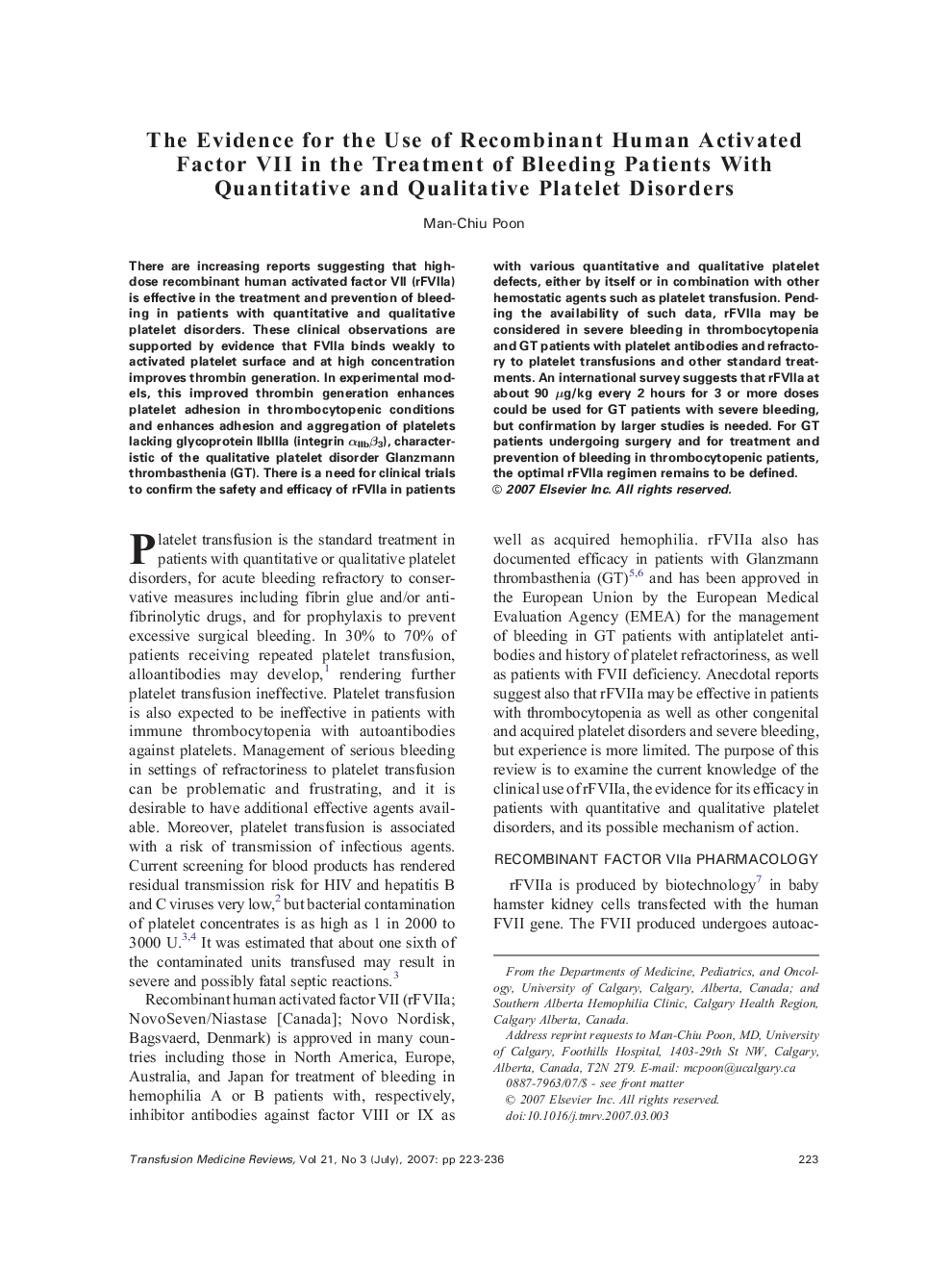| Article ID | Journal | Published Year | Pages | File Type |
|---|---|---|---|---|
| 3336853 | Transfusion Medicine Reviews | 2007 | 14 Pages |
There are increasing reports suggesting that high-dose recombinant human activated factor VII (rFVIIa) is effective in the treatment and prevention of bleeding in patients with quantitative and qualitative platelet disorders. These clinical observations are supported by evidence that FVIIa binds weakly to activated platelet surface and at high concentration improves thrombin generation. In experimental models, this improved thrombin generation enhances platelet adhesion in thrombocytopenic conditions and enhances adhesion and aggregation of platelets lacking glycoprotein IIbIIIa (integrin αIIbβ3), characteristic of the qualitative platelet disorder Glanzmann thrombasthenia (GT). There is a need for clinical trials to confirm the safety and efficacy of rFVIIa in patients with various quantitative and qualitative platelet defects, either by itself or in combination with other hemostatic agents such as platelet transfusion. Pending the availability of such data, rFVIIa may be considered in severe bleeding in thrombocytopenia and GT patients with platelet antibodies and refractory to platelet transfusions and other standard treatments. An international survey suggests that rFVIIa at about 90 μg/kg every 2 hours for 3 or more doses could be used for GT patients with severe bleeding, but confirmation by larger studies is needed. For GT patients undergoing surgery and for treatment and prevention of bleeding in thrombocytopenic patients, the optimal rFVIIa regimen remains to be defined.
